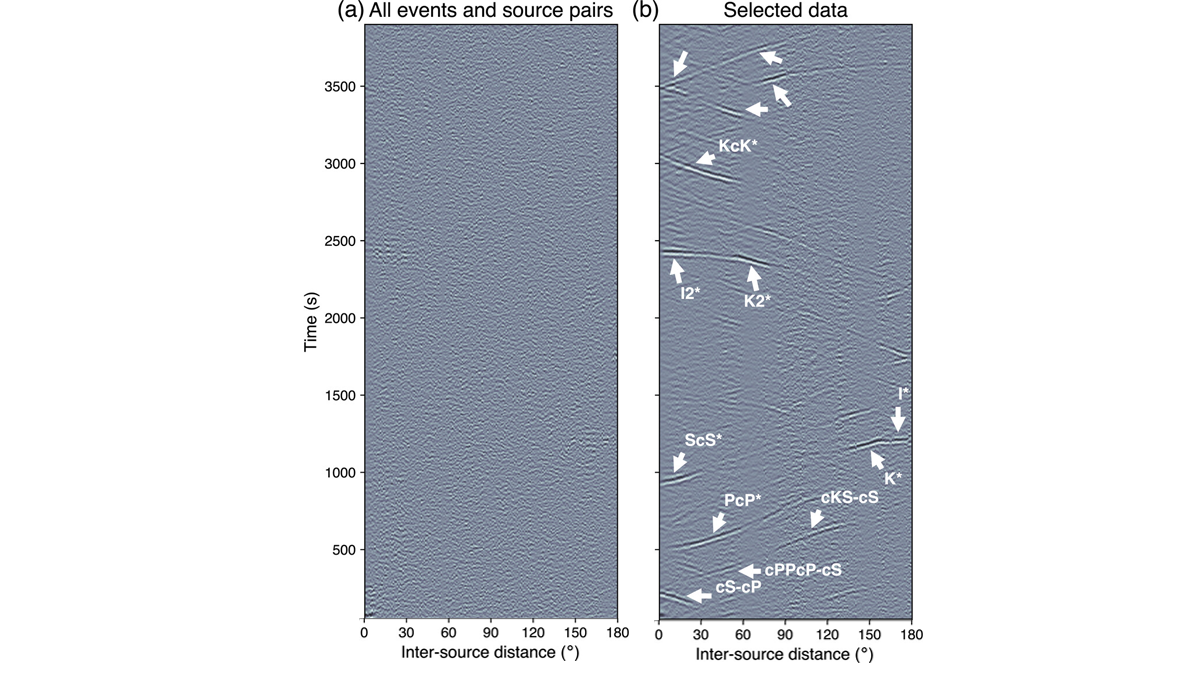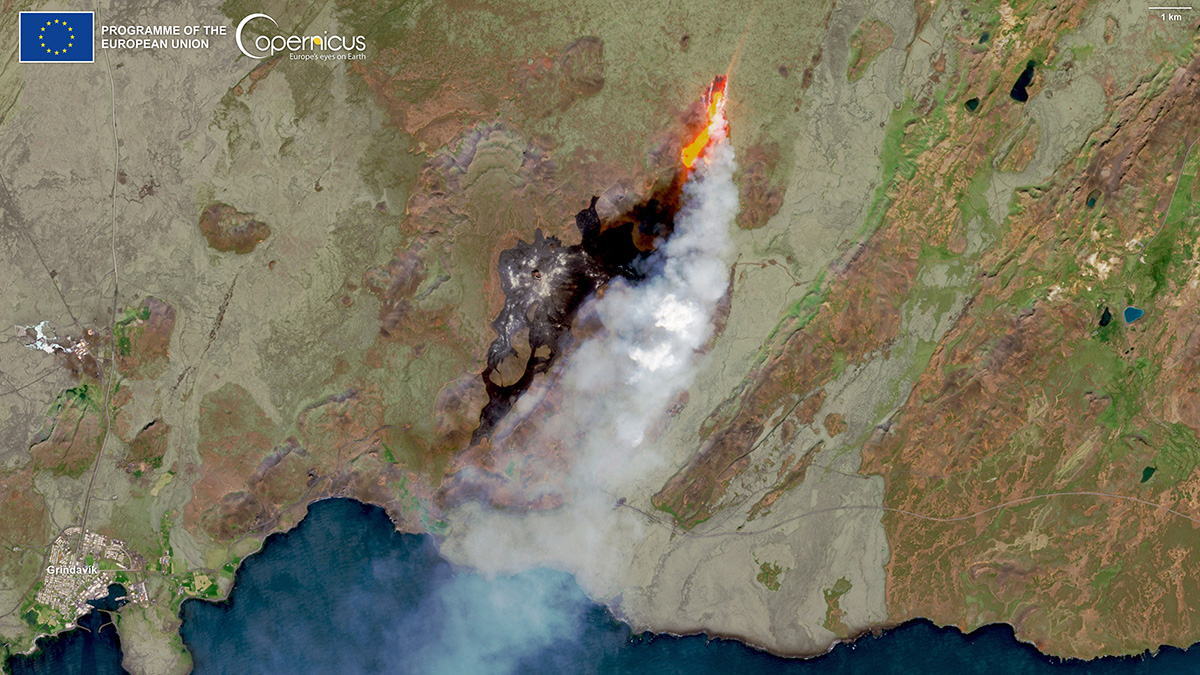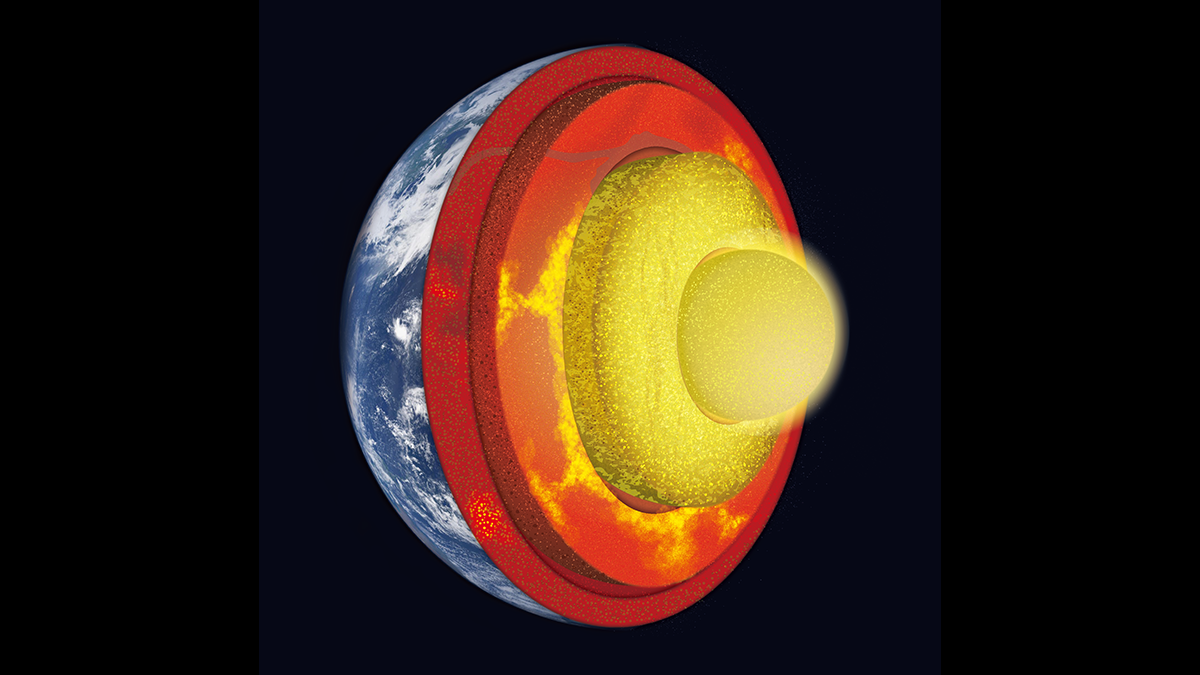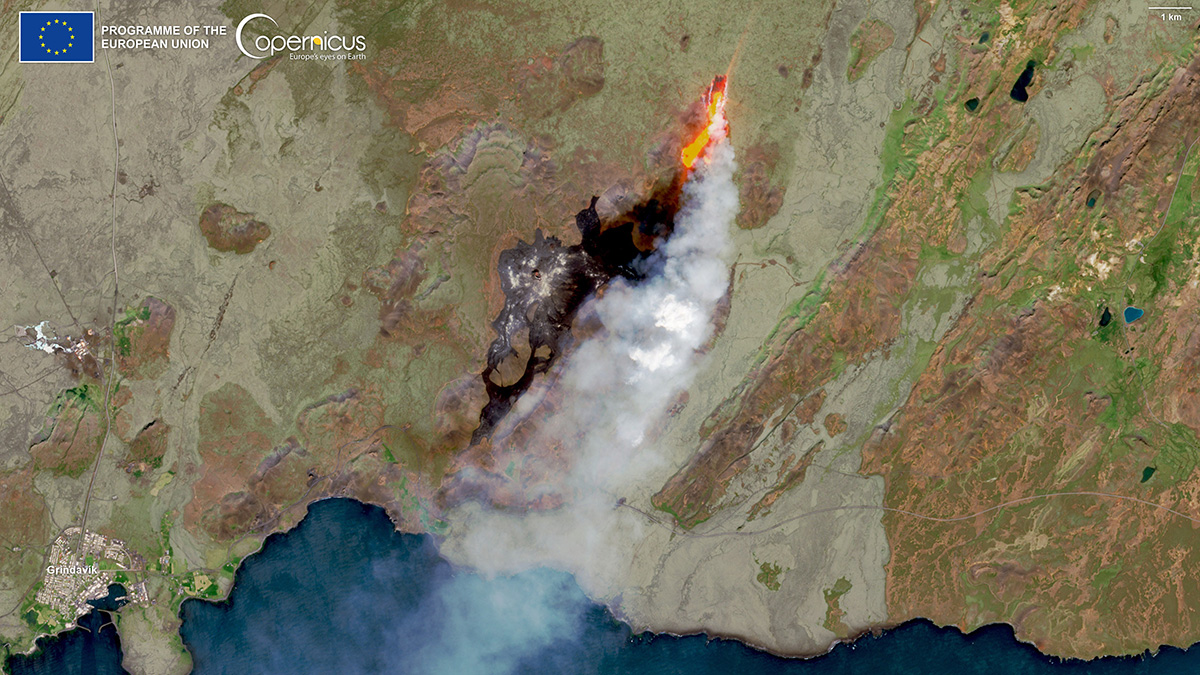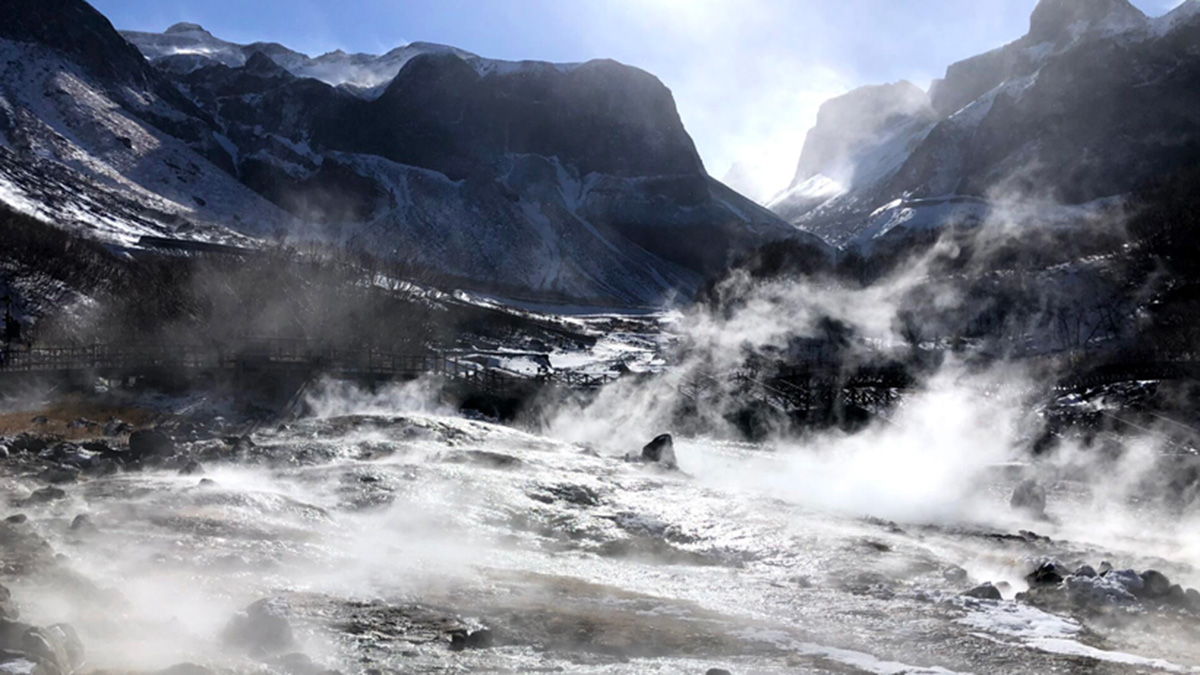A new method for examining the tiny vibrations of Earth caused by ocean swells could help reveal details of deep-Earth structure.
Earth’s interior
Source Selection Essential to Inter-Source Cross-Correlation
Inter-source correlograms yield coherent signals upon careful consideration of source mechanisms and source-receiver geometry, affording new means of characterizing planetary interiors.
La tercera es la vencida para el Fagradalsfjall de Islandia
La región volcánica que hizo erupción en 2021 y 2022 después de más de 7 siglos de estar dormida, lo está haciendo de nuevo.
Digging Deep into Interactions Between the Core and Mantle
A new book presents major advances in our understanding of core-mantle interaction and co-evolution, and showcases technological developments improving our insights into deep Earth processes.
Third Time’s the Charm for Iceland’s Fagradalsfjall
The volcanic region, which erupted in both 2021 and 2022 after more than 7 centuries of dormancy, is at it again.
How to Find a Volcanic Diamond Mine
New 3D modeling illustrates the mechanism behind the intriguing volcanic eruptions that bring diamonds to the surface.
Mounds of Ancient Ocean Floor May Be Hiding Deep in Earth
A mysterious seismic feature at the bottom of Earth’s mantle is more widespread than previously thought.
Do Volcanoes Add More Carbon Than They Take Away?
Slow carbon seep long after eruptions have ceased could shape the carbon cycle on geological timescales.
The Depleted Mantle Merry-Go-Round
Abyssal peridotites show through their isotopic composition a complex history. From differences we can infer the existence of ultra depleted mantle and an uneven contribution to ridge magmatism.


